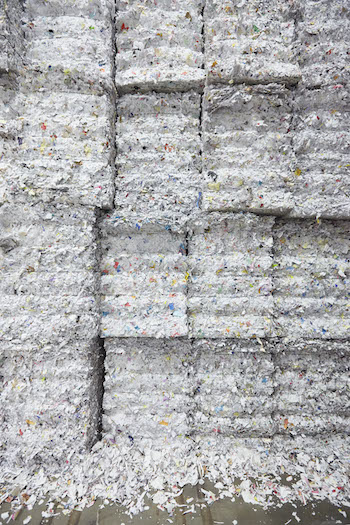With the omnipresence of media in our everyday lives, humans are more exposed than ever to their own environmental impacts. The most recent figures from the EPA show that Americans produce more than four pounds of trash per person per day.
Considering modern consumers are more environmentally aware than their predecessors, many do care about living more sustainable and mindful lives. According to Nielsen’s recent global sustainability report, 81 percent of respondents feel strongly that companies should help improve the environment by implementing programs to this effect.

Circular Opportunities for Paper
The impacts of human consumption on the environment have led many to advocate for a circular economy where use of renewable materials, re-use of raw materials, and recycling factor into manufacturing systems for new products. As opposed to a traditional “one and done” linear economy model, in a true circular economy, new products are created from old products and manufacturing requires fewer natural resources and has a minimal impact on the environment.
As evidenced in a 2018 study carried out by the Swedish Environmental Research Institute on the environmental impact of various materials, paper has a comparatively lower environmental impact throughout its life cycle, from raw sourcing to production to waste management.
Responsibly sourced paper originates from managed forests which are replenished, and raw materials for paper products can also be sourced from recycling systems – post-consumer paper can be reused to create new paper up to 5-7 times. For instance, the full life cycle of Rolland’s Enviro line of paper products embodies the circular economy. A life cycle assessment (LCA) undertaken by research and consulting firm AGÉCO revealed Rolland’s manufacturing to have a lower environmental impact than other paper production processes in the North America.
Furthermore, paper collection and recycling are far more energy efficient than producing fiber from virgin sources, and paper is one of the most recycled materials on the planet. According to the most recent stats from the American Forest & Paper Association, 96 percent of Americans have access to community-based paper recycling options.
Related: Eco-Friendly Business Practices for the Environment and Your Wallet
Are Current Paper Systems Sustainable?
Low biodegradability and an inability to be recycled efficiently results in synthetic materials having less “circularity” than materials like paper. Although paper systems do have less of an environmental impact than those related to synthetic materials, the bottom line is that recycling is a complex and evolving industry. Changes in government regulations, world markets, and recycling standards can all impact paper recycling (and by extension impact the sustainability of paper systems as a whole), but a high paper recyclability rate coupled with techno-economic innovations and paper-focused government initiatives (like REMADE projects aimed at improving manufacturing efficiency of paper) all suggest that paper systems are on their way to becoming sustainable.
Renewable materials like paper should have an increased role in our consumption systems to contribute to a more sustainable society, and undoubtedly paper materials will be a part of humanity’s sustainable future.










